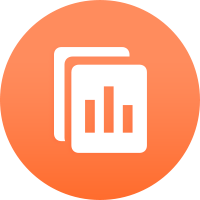
2025-02-28 18:09
업계AI-Driven Forex HFT Strategy Development
#AITradingAffectsForex
AI-Driven Forex HFT Strategy Development and Optimization.
The success of High-Frequency Trading (HFT) in the Forex market heavily relies on the performance of trading strategies. AI can revolutionize Forex HFT strategy development and optimization by enabling data-driven decision-making, pattern recognition, and continuous learning. Here's a detailed look at AI-driven strategy development and optimization in Forex HFT:
1. Data Collection and Preprocessing: AI-powered tools can gather and preprocess large volumes of historical and real-time Forex market data, ensuring its quality and consistency for strategy development.
2. Pattern Recognition and Feature Extraction: AI algorithms can identify patterns and relationships in market data, extracting relevant features that may inform trading strategies. This includes technical indicators, price trends, and other data-driven signals.
3. Strategy Development: Using pattern recognition and feature extraction results, AI models can generate and test new HFT strategies based on data-driven insights. This may involve optimizing entry and exit rules, position sizing, and risk management parameters.
4. Strategy Backtesting and Validation: AI-driven backtesting tools can evaluate HFT strategies' performance against historical market data, helping traders assess their potential profitability and risk exposure. Validation techniques ensure that models are not overfitted to historical data, increasing confidence in their predictive ability.
5. Strategy Optimization: AI-powered optimization algorithms can fine-tune HFT strategy parameters to achieve optimal performance based on predefined objectives, such as maximizing returns, minimizing risk, or maintaining a specific risk-return profile.
6. Continuous Learning and Adaptation: AI-driven models can continually learn from new market data and adjust HFT strategies accordingly, ensuring their relevance and effectiveness in dynamic market conditions.
7. Strategy Diversification: AI can help develop and manage a diverse portfolio of HFT strategies, reducing exposure to specific market risks and enhancing overall portfolio performance.
In conclusion, AI-driven Forex HFT strategy development and optimization empower traders to harness the power of data, recognize complex patterns, and adapt to changing market conditions. By leveraging AI technologies, HFT firms can create more effective and robust trading strategies, improving their competitiveness and profitability in the fast-paced world of foreign exchange trading.
좋아요 0

FX1194337109
ブローカー
인기있는 콘텐츠
시장 분석
투자주체별매매 동향
시장 분석
유로존 경제 쇠퇴 위기 직면
시장 분석
국제 유가는 어디로
시장 분석
미국증시 레버리지(Leverage)·인버스(Inverse)형의 ETF, 최근 사상 최대 신
시장 분석
투기장 된 원유 ETL...첫 투자위험 발령
시장 분석
RBNZ 양적완화 확대
포럼 카테고리

플랫폼

전시회

IB

모집

EA

업계

시세

인덱스
AI-Driven Forex HFT Strategy Development
 이집트 | 2025-02-28 18:09
이집트 | 2025-02-28 18:09#AITradingAffectsForex
AI-Driven Forex HFT Strategy Development and Optimization.
The success of High-Frequency Trading (HFT) in the Forex market heavily relies on the performance of trading strategies. AI can revolutionize Forex HFT strategy development and optimization by enabling data-driven decision-making, pattern recognition, and continuous learning. Here's a detailed look at AI-driven strategy development and optimization in Forex HFT:
1. Data Collection and Preprocessing: AI-powered tools can gather and preprocess large volumes of historical and real-time Forex market data, ensuring its quality and consistency for strategy development.
2. Pattern Recognition and Feature Extraction: AI algorithms can identify patterns and relationships in market data, extracting relevant features that may inform trading strategies. This includes technical indicators, price trends, and other data-driven signals.
3. Strategy Development: Using pattern recognition and feature extraction results, AI models can generate and test new HFT strategies based on data-driven insights. This may involve optimizing entry and exit rules, position sizing, and risk management parameters.
4. Strategy Backtesting and Validation: AI-driven backtesting tools can evaluate HFT strategies' performance against historical market data, helping traders assess their potential profitability and risk exposure. Validation techniques ensure that models are not overfitted to historical data, increasing confidence in their predictive ability.
5. Strategy Optimization: AI-powered optimization algorithms can fine-tune HFT strategy parameters to achieve optimal performance based on predefined objectives, such as maximizing returns, minimizing risk, or maintaining a specific risk-return profile.
6. Continuous Learning and Adaptation: AI-driven models can continually learn from new market data and adjust HFT strategies accordingly, ensuring their relevance and effectiveness in dynamic market conditions.
7. Strategy Diversification: AI can help develop and manage a diverse portfolio of HFT strategies, reducing exposure to specific market risks and enhancing overall portfolio performance.
In conclusion, AI-driven Forex HFT strategy development and optimization empower traders to harness the power of data, recognize complex patterns, and adapt to changing market conditions. By leveraging AI technologies, HFT firms can create more effective and robust trading strategies, improving their competitiveness and profitability in the fast-paced world of foreign exchange trading.
좋아요 0
나 도 댓 글 달 래.
제출
0코멘트

댓글이 아직 없습니다. 첫 번째를 만드십시오.

제출
댓글이 아직 없습니다. 첫 번째를 만드십시오.